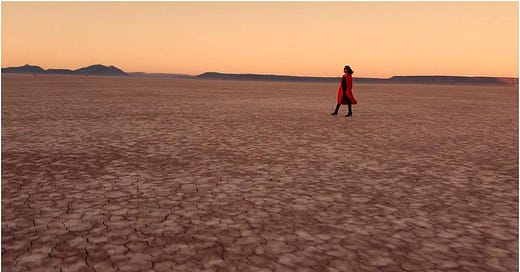“The Chances of Finding Life on Mars, is a Hundred Percent!”
Claims former NASA Astrobiologist in New Mars Film “Blue Planet Red”

Finally in 2024, we have a new Mars documentary film that explores rationally and reasonably the question of whether life has ever existed on the Planet Mars, not just microbial, but also animal, and maybe even intelligent life too – and that some of that life may still be present on the Red Planet today.
Directed by independent film maker Brian Cory Dobbs and produced by author and researcher M. J. Craig, “Blue Planet Red” takes the bold step of interviewing solid, rational scientists who care passionately about data and what it tells them, rather than worry about how their views might impact their funding and status amongst scientific colleagues – a refreshingly open-minded and persistent investigation which reveals some startling, fascinating and truly disturbing revelations concerning the Red Planet.

The film quickly launches into the now scientifically accepted, but less publicly known fact, that Mars used to have enormous amounts of water and as Professor of Planetary Science at UCLA, David Paige explained, probably had a large northern ocean too. More importantly however, is that even today, Mars still has a huge mass of water mostly in the form of frozen ice, but also in liquid form as evidence of large subsurface lakes has revealed, and also abundant sources of transient brine flows from crater walls, formed by the deliquescence of salts.
With so much water existing in the Red Planet’s ancient past, and also present today, the inevitable question revolves around the “L word” – “Life” – for when we find liquid water along with a source of energy and nutrients, this usually means that somewhere we will find life.
And here “Blue Planet Red” turns up the heat, especially on NASA, for as the film shows, the U.S. space agency has been oddly reluctant to actually go and find that Martian life, and to answer the most important question that humanity, and science, wants to know: “Is there life on Mars today?”
Well, incredibly, NASA has missed several opportunities to find out if life exists on Mars:
1. They dismissed the results of the life detection experiments in 1976 deployed by the Viking Landers - the experiment’s designer, Dr. Gil Levin, was certain they had found life.
2. They have since failed to send a single astrobiology mission to search for life on Mars since 1976 – despite having received billions of dollars of funding, a gap of 48 years!
3. They deliberately destroyed a potential animal fossil on Mars – imaged by the Opportunity Rover in 2004, the abrasion tool was ordered to grind it to dust!
4. They have failed to examine a single drop of water on Mars for life – despite having landed four science rovers on the surface since 2004, and knowing exactly where to find the water.

NASA’s odd reluctance to search for life, however, has not deterred scientists from exclaiming their forthright views about its existence on Mars, as Professor Richard B. Hoover, a former head of Astrobiology at NASA, declared in Blue Planet Red:
“In my opinion, the chances of finding life on Mars, is a hundred percent!”
Life, he asserts is extremely tenacious, and is found in all kinds of extreme environments, Hoover continues:
"We now know that life exists on Earth in the most bizarre and strange places. Deep in the bottom of the ocean, deep within the crust of the Earth, high in the atmosphere, in the stratosphere. Life seems to be wherever you find water, a source of energy, and those twenty critical, biogenic elements coexisting together, there you find life."



